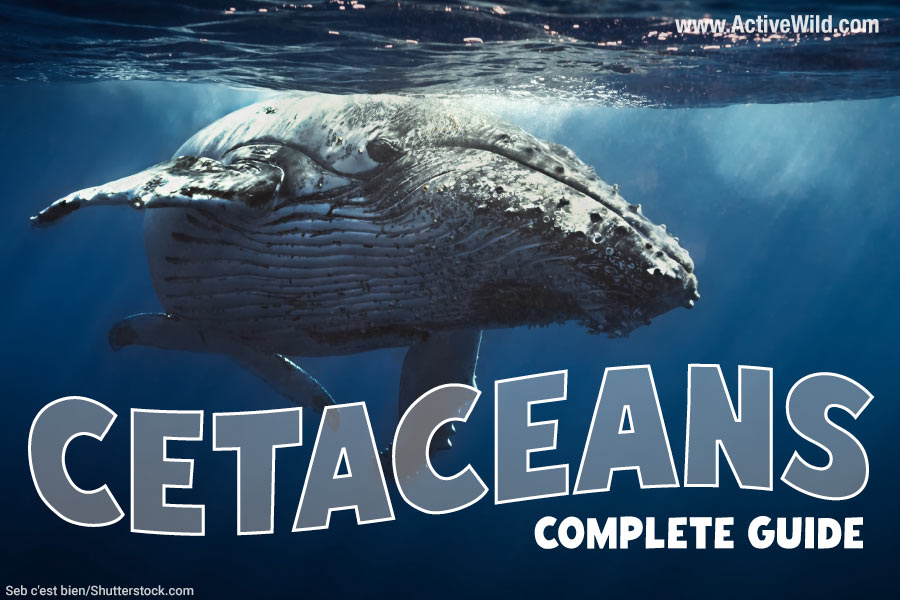Cetaceans are a group (Cetacea) of marine mammals comprising all whales, dolphins and porpoises. On this page you’ll find out what cetaceans are, cetacean characteristics, the different types of cetaceans, and examples of cetaceans...
Page Index
- What Is A Cetacean?
- What Type Of Animal Is A Cetacean?
- Cetacean Characteristics
- Different Types Of Cetaceans
- Whales
- Dolphins
- Porpoises
- How Many Cetacean Species Are There?
- Animals Related To Cetaceans
- Examples Of Cetaceans
- Discover More With Active Wild
Related Pages
- You can see pictures and facts on EVERY species of whale on this page: Types Of Whales
- You can see pictures and facts on EVERY species of dolphin on this page: Types of Dolphins
Got any cetacean questions? Feel free to ask us in the comments section at the bottom of the page!
What Is A Cetacean?
A cetacean is a member of the infraorder Cetacea – a group of marine mammals that includes whales, dolphins, and porpoises. There are approximately 90 species of cetaceans, divided into two main groups, the parvorders Mysticeti (baleen whales) and Odontoceti (toothed whales).
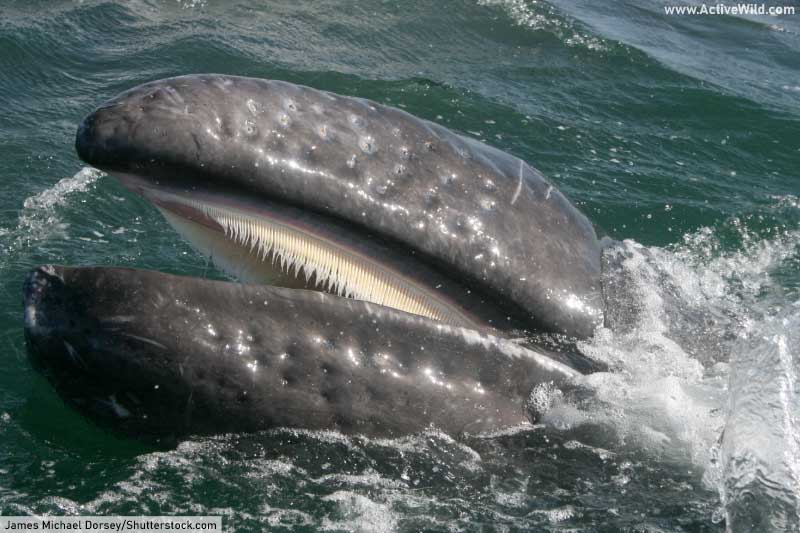
- Mysticeti, or baleen whales, include species like the blue whale, humpback whale, gray whale, and the right whales. They are characterized by baleen plates in their mouths, which are used to filter small food items from seawater.
- Odontoceti, or toothed whales, include species such as the sperm whale, beluga whale, and all dolphins and porpoises. As the name suggests, toothed whales have teeth and they tend to hunt individual prey. They also have the ability to echolocate, meaning they use sound waves to navigate and find prey.

Cetaceans are fully aquatic creatures, ranging from relatively small, river-dwelling dolphins to the massive blue whale, which is the largest animal to have ever lived. They are found in oceans, seas, and even some rivers throughout the world. Conservation efforts are ongoing for many species of cetaceans, as they face threats from hunting, pollution, and climate change.
Cetacea is part of the order Artiodactyla, a group of animals known as “even-toed ungulates”. This group contains animals such as deer, antelopes and cattle, as well as hippopotamuses, the land animals most closely-related to cetaceans.
What Type Of Animal Is A Cetacean?

Despite their fish-like appearance and aquatic lifestyle, cetaceans are mammals. The ancestors of living cetaceans were land-living mammals. Over millions of years, cetaceans evolved a fully-aquatic lifestyle, but, like all mammals, are warm-blooded, breathe air through lungs, give live birth, and nurse their young with milk.
You can find out more about the characteristics of mammals on this page: Mammals - The Ultimate Guide
You can see the different types of mammals on this page: Types of Mammals
Convergent Evolution
The similarities between whales and fish are examples of convergent evolution. Convergent evolution occurs when different species develop similar traits or adaptations, not because they share a common ancestor with those traits, but because they have adapted to similar environments or ecological niches.
In the case of whales and fish, both have streamlined bodies that are efficient for moving through water. They both have fins/flippers to aid in swimming, and tail fins (known as flukes in cetaceans) that provide propulsion. However, despite these similarities, whales and fish are fundamentally different in many ways due to their different evolutionary backgrounds.
Fish are a diverse group that belong to many different evolutionary lineages, but, unlike mammals, most are cold-blooded, breathe through gills, and lay eggs.
Although whales and fish may look similar on the surface due to their adaptations to aquatic life, these traits were developed independently in response to similar environmental pressures.
You can find out more about fish on this page: Fish - The Ultimate Guide
Cetacean Characteristics
All cetaceans share a number of distinct characteristics due to their full adaptation to aquatic life. These include:
- Body Shape: Cetaceans have a streamlined, spindle-shaped body that allows them to move through water efficiently.
- Breathing: Cetaceans breathe air through a blowhole located on top of their heads. A cetacean’s blowhole is the equivalent of nostrils in other mammals. Over millions of years of evolution, the nostrils of cetaceans migrated to the top of the head, and became a blowhole.
- Limbs: Cetaceans evolved flippers from their forelimbs and lack hind limbs, although internal, vestigial remnants of ancestral hind limbs are present. Their tails have horizontally-oriented flukes which they move up and down to propel themselves through the water.
- Skin and Blubber: Cetaceans have a thick layer of blubber under their skin, which serves as both insulation in cold water and a reserve of energy. Their skin is usually smooth and hairless, with only a few hairs remaining around the mouth in some species.
- Echolocation: Many cetaceans, particularly toothed whales (Odontoceti), have the ability to echolocate. This means they can emit sounds and interpret the echoes to navigate their environment and locate prey.
- Feeding: Cetaceans have diverse feeding strategies. Baleen whales (Mysticeti) have large baleen plates in their mouths to filter small organisms from the water. Toothed whales (Odontoceti), on the other hand, have teeth and usually hunt individual prey.
- Social Behavior: Many cetaceans live in complex social groups and demonstrate sophisticated behaviors. Some species, like dolphins and orcas, are known for their high intelligence, communication skills, and use of tools.
- Reproduction: Like all mammals, cetaceans give live birth and nurse their young with milk. They also exhibit extended parental care.
- Sound Production and Hearing: Cetaceans are known for their diverse range of sounds used for communication, navigation, and hunting. Although whales lack external ears, they have excellent hearing, adapted for underwater acoustics.
Different Types Of Cetaceans
Cetacea is home to the animals known as whales, dolphins and porpoises. There are two main types of cetaceans: baleen whales (parvorder Mysticeti), and toothed whales (parvorder Odontoceti). All dolphins and porpoises are toothed whales, and the toothed whales group also contains whales such as sperm whales and beaked whales.
Baleen whales filter feed by straining large amounts of water through baleen plates to catch plankton and small fish, while toothed whales generally hunt larger individual prey and use echolocation for navigation and finding food.
Whales
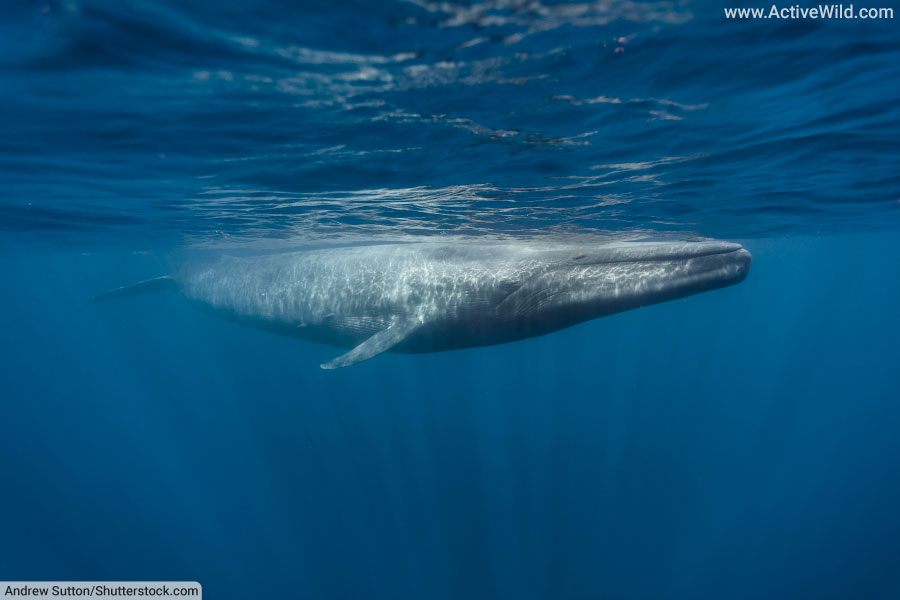
Strictly speaking, all cetaceans are whales, but generally, the term “whale” is used to refer to a cetacean that is neither a dolphin nor a porpoise. Therefore, a whale can be any baleen whale, and any toothed whale outside of the oceanic dolphin, freshwater dolphin, and porpoise families.
Confusingly, several dolphins (including the killer whale) do not have the word “dolphin” in their common names, and are commonly referred to as whales.
Whales are typically very large (the blue whale is the largest species ever to have lived), and all are carnivores.
Despite their huge size, baleen whales hunt small prey animals such as krill and schooling fish, filtering them in vast quantities from the water with comb-like baleen plates in their mouths.
Toothed whales typically hunt individual prey – usually fish or squid – using echolocation. They are equipped with peg-like teeth for capturing their prey.
Dolphins
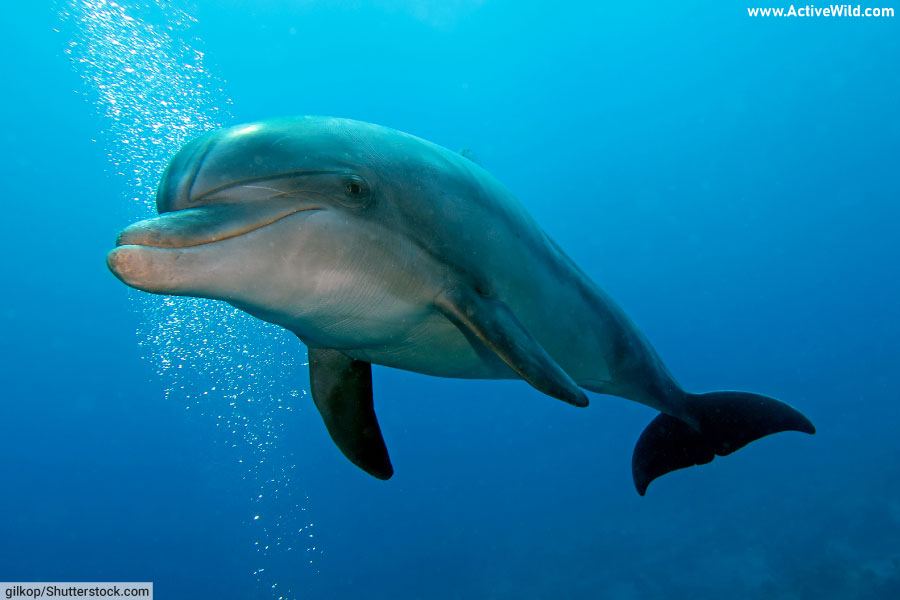
A dolphin is a toothed whale belonging to the family Delphinidae (oceanic dolphins) or the families Platanistidae, Iniidae and Pontoporiidae (river dolphins). Dolphins are highly intelligent, social animals known for their playful and acrobatic behavior.
Dolphins are found worldwide, and are primarily oceanic animals, although there are a few species of freshwater river dolphins. Like all cetaceans, dolphins are carnivorous, feeding on a diet of fish and squid.
Physical characteristics of dolphins include a streamlined body, a dorsal fin, and a long snout filled with sharp teeth. Dolphins have excellent vision, both in and out of the water, and they have a sophisticated sense of hearing that enables them to use echolocation to find food and navigate their environment.
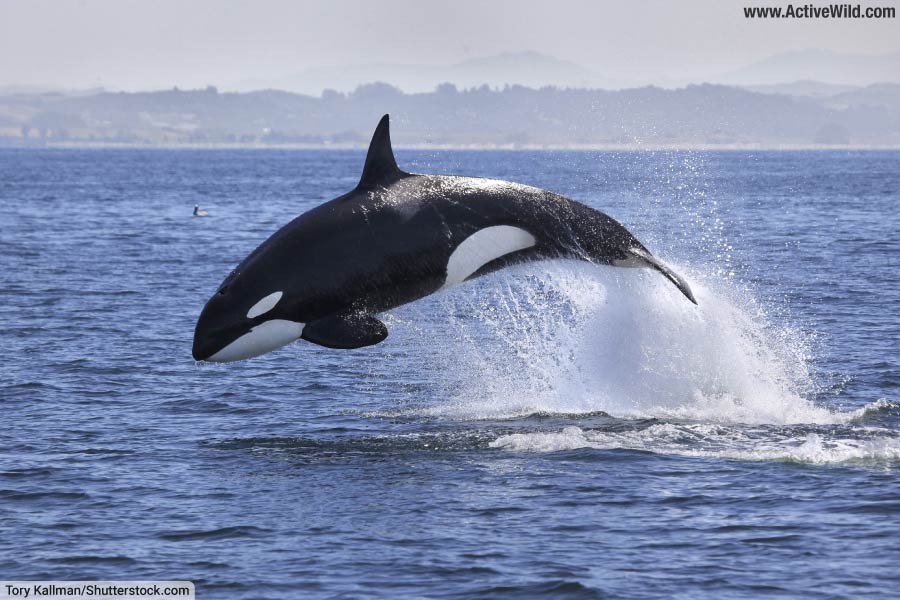
Dolphins have complex social structures, often living in pods of up to a dozen individuals. When food is abundant, pods can merge temporarily, forming a superpod, which can consist of over a thousand dolphins.
Dolphins are known to communicate using a variety of clicks, whistle-like sounds and other vocalizations. They also use nonverbal communication through touch and posturing. Their high level of intelligence and capacity for communication and emotion have led to numerous investigations into their mental capabilities and social structures.
Not all dolphins have the word dolphin in their names: species such as the killer whale, false killer whale, and pilot whales are all dolphins.
Porpoises

A porpoise is a toothed whale belonging to the family Phocoenidae. Porpoises are often confused with dolphins, and while they are similar, there are several important differences:
- Size and Shape: Porpoises are generally smaller and chunkier than dolphins, with a more rounded body shape.
- Teeth: The teeth of porpoises are spade-shaped while dolphins have cone-shaped teeth.
- Snout: Porpoises have shorter snouts, or beaks, as compared to the longer, more pronounced beaks of many dolphin species.
- Dorsal Fin: The dorsal fin (the fin on the back) of a porpoise is generally triangular and quite flat, while dolphins tend to have a more curved or hooked dorsal fin.
- Behavior: Porpoises tend to be more shy and less acrobatic than dolphins.
You can find out more about the differences between dolphins and porpoises on this page: Dolphin Vs Porpoise
How Many Cetacean Species Are There?
90 cetacean species of are currently recognized: 43 whales, 40 dolphins, and 7 porpoises.
Animals Related To Cetaceans
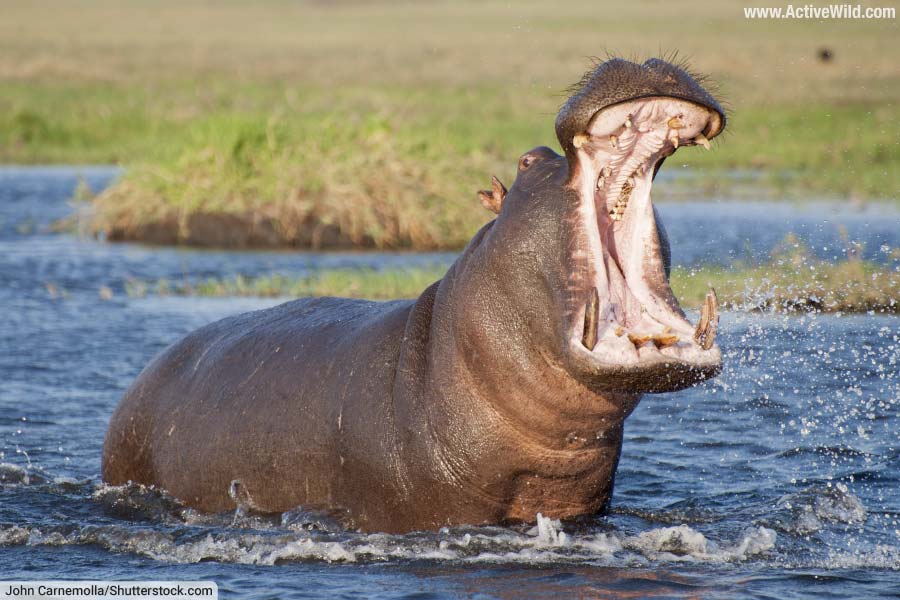
Cetaceans belong to the order Artiodactyla, a group of mammals also known as even-toed ungulates (hoofed animals with an even number of toes).
Some biologists use the name Cetartiodactyla to refer to this group to recognize the inclusion of cetaceans.
The closest living relatives to cetaceans within Artiodactyla are the hippos (family Hippopotamidae). Fossil evidence suggests that cetaceans and hippos share a common semi-aquatic ancestor that lived around 50-60 million years ago. Since then, the two groups have diverged significantly, with cetaceans becoming fully adapted to life in the water, while hippos remain semi-aquatic.
Some of the more distant relatives of cetaceans in Artiodactyla include animals like deer, giraffes, camels, pigs, cows, sheep, and goats. Although they may look very different, these animals share certain anatomical features, such as a similar structure in their ankle bones, and other genetic similarities that suggest a common evolutionary origin.
Examples Of Cetaceans
Humpback Whale

- Type of cetacean: Whale
- Parvorder: Mysticeti (baleen whale)
The humpback whale is a large species of baleen whale known for its long pectoral fins, distinctive humped back, and intricate songs. Measuring between 40 to 60 feet and weighing around 25 to 40 tons, it undertakes vast migrations between polar feeding grounds and tropical breeding grounds, and displays hunting techniques such as bubble net feeding.
You can find out more about the humpback whale on this page: Humpback Whale Facts
Blue Whale

- Type of cetacean: Whale
- Parvorder: Mysticeti (baleen whale)
The blue whale is the largest animal ever known to have existed, reaching lengths of up to 100 feet and weights up to 200 tons. This majestic marine mammal is known for its bluish-grey body, long, slender shape, and diet primarily consisting of tiny shrimp-like animals called krill.
You can find out more about the blue whale on this page: Blue Whale Facts
Beluga Whale
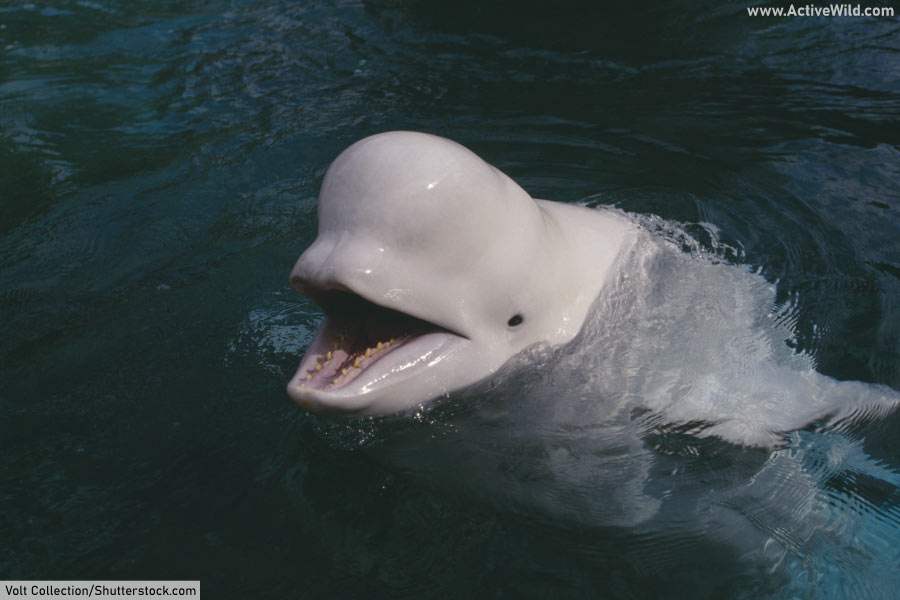
- Type of cetacean: Whale
- Parvorder: Odontoceti (toothed whale)
The beluga whale is a small, white cetacean renowned for its bulbous forehead and flexible neck that enables head movement. Inhabiting Arctic and sub-Arctic waters, this social and vocal species feeds mainly on fish, but its diverse diet also includes invertebrates such as crustaceans and worms.
You can find out more about the beluga whale on this page: Beluga Whale Facts
Sperm Whale
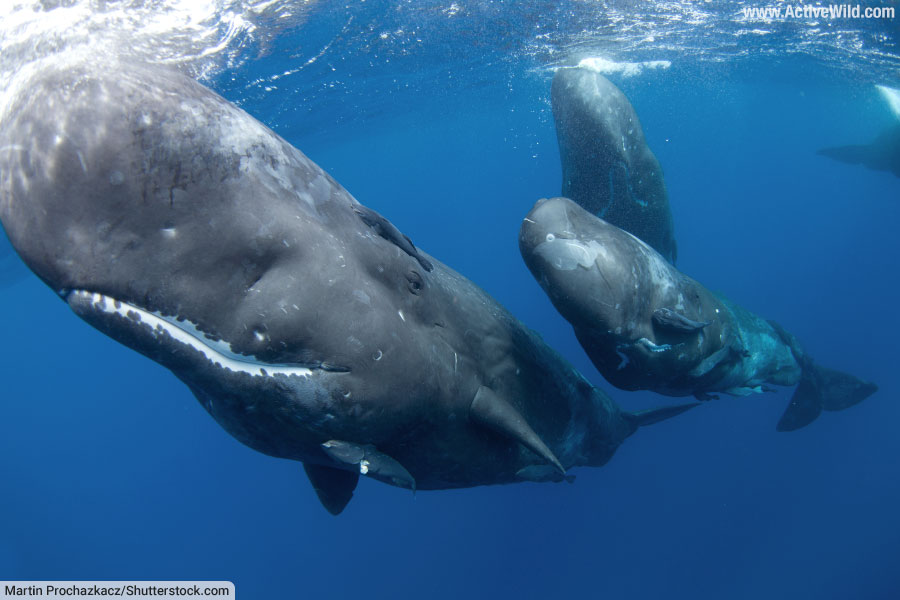
- Type of cetacean: Whale
- Parvorder: Odontoceti (toothed whale)
The sperm whale is a deep-diving, toothed cetacean, renowned for its large, block-shaped head, which contains a substance called spermaceti, once used in oil lamps and lubricants. This species, which has a single blowhole on the left of the frontal hump, feeds predominantly on giant squid and can be found in oceans worldwide.
You can find out more about the sperm whale on this page: Sperm Whale Facts
North Atlantic Right Whale
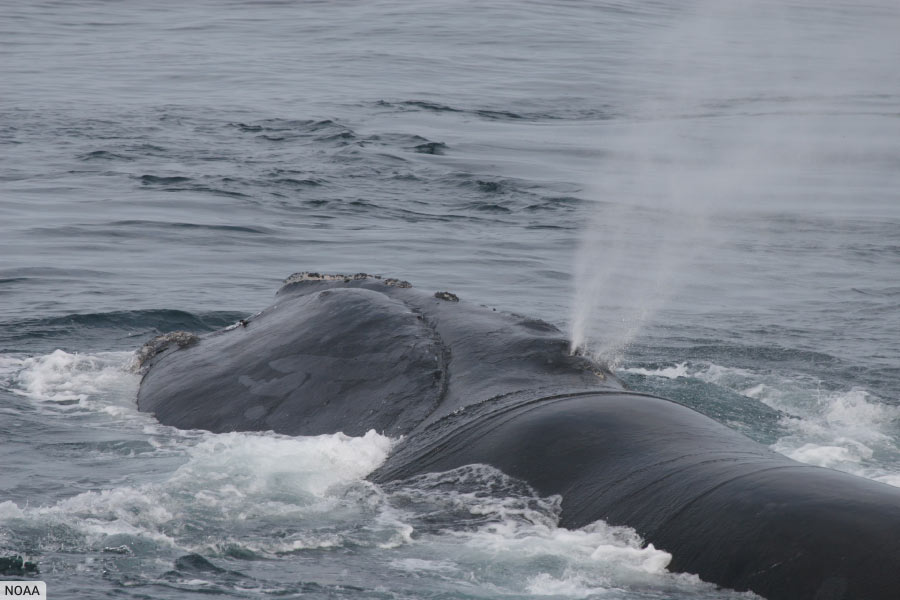
- Type of cetacean: Whale
- Parvorder: Mysticeti (baleen whale)
The North Atlantic right whale is a large baleen whale known for its robust body, lack of a dorsal fin, and distinctive rough patches of skin, called callosities, on its head – characteristics it shares with the two other right whales. Critically endangered, this cetacean inhabits the Atlantic Ocean, migrating between northern feeding grounds and southern breeding grounds.
You can find out more about the North Atlantic right whale on this page: North Atlantic Right Whale Facts
Killer Whale

- Type of cetacean: Dolphin
- Parvorder: Odontoceti (toothed whale)
The killer whale, or orca, is a highly intelligent, social marine mammal known for its distinctive black and white coloring and a tall, prominent dorsal fin. This apex predator feeds on a diverse diet that includes fish, seals, and even other large whales. It is found in oceans all around the world.
You can find out more about the killer whale on this page: Killer Whale Facts
Common Bottlenose Dolphin
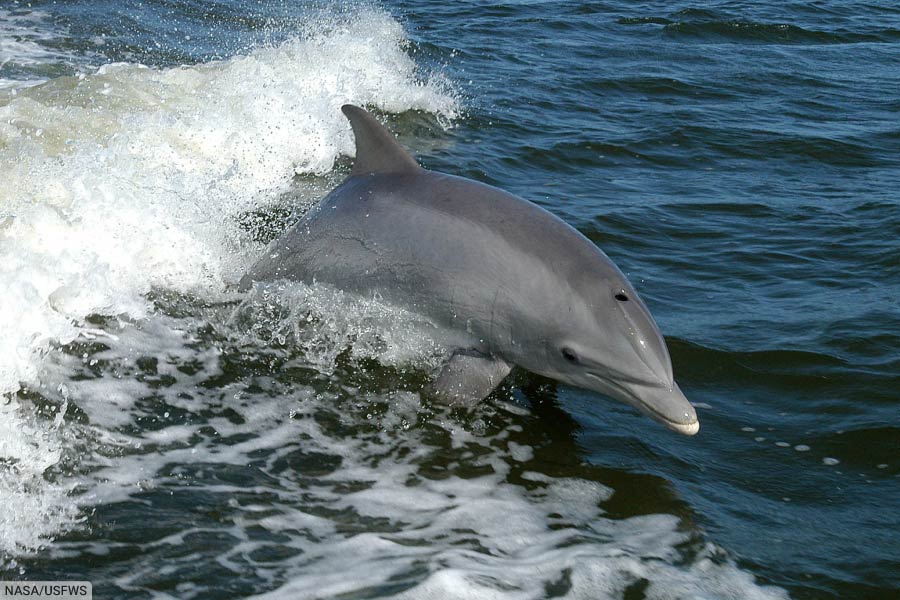
- Type of cetacean: Dolphin
- Parvorder: Odontoceti (toothed whale)
The common bottlenose dolphin is a highly intelligent marine mammal, known for its streamlined body, dark gray color, and distinctive 'bottle-shaped' snout. This species is known for its acrobatics, complex social structure, and widespread distribution in warm and temperate seas around the globe.
You can find out more about the common bottlenose dolphin on this page: Common Bottlenose Dolphin Facts
Spinner Dolphin
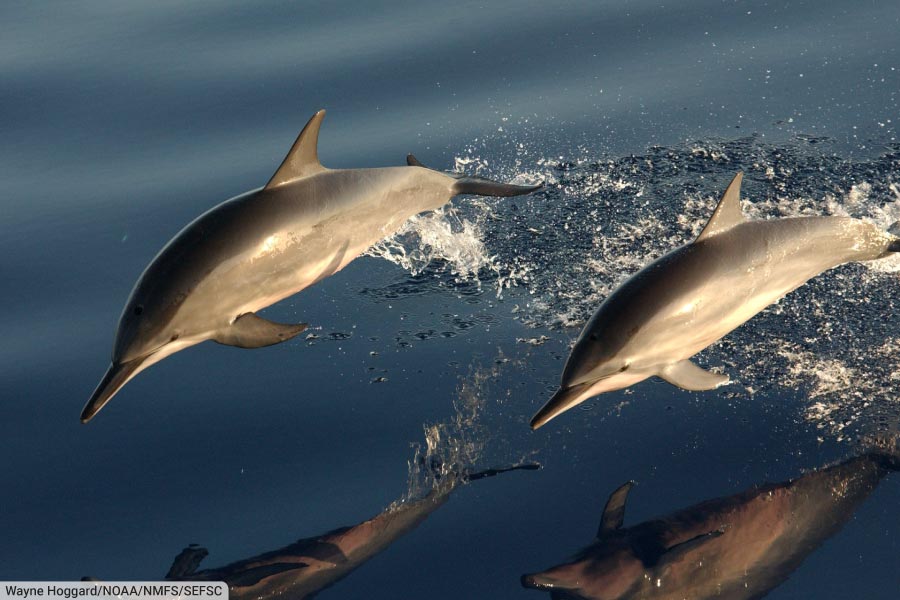
- Type of cetacean: Dolphin
- Parvorder: Odontoceti (toothed whale)
The spinner dolphin is a small and slender marine mammal recognized for its unique acrobatic behaviors, particularly its ability to leap and spin multiple times in the air. Found in tropical oceans worldwide, this species is known for its tri-colored pattern and elongated rostrum, or beak.
You can find out more about the xxx on this page: xxx Facts
Amazon River Dolphin
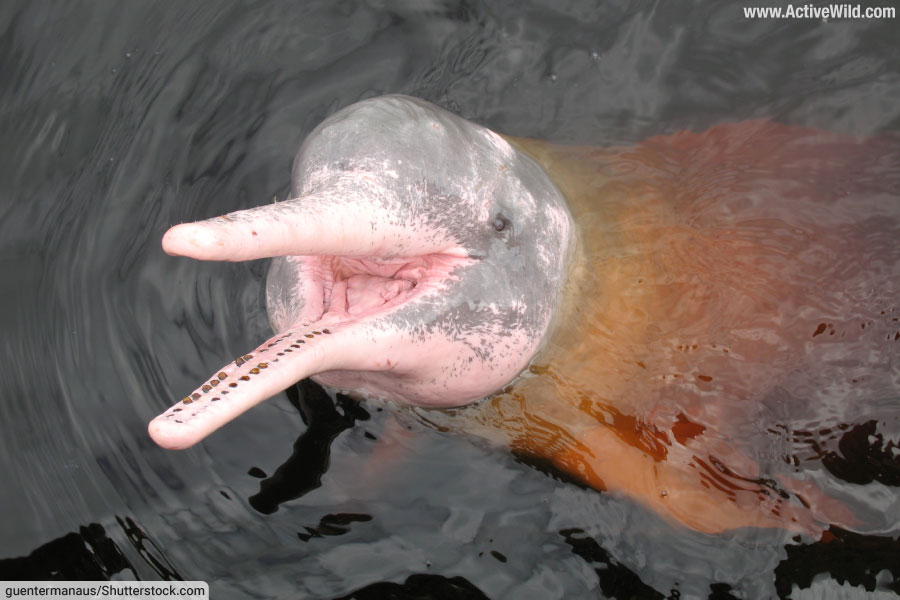
- Type of cetacean: Dolphin
- Parvorder: Odontoceti (toothed whale)
The Amazon river dolphin, also known as the pink river dolphin or boto, is a freshwater dolphin known for its distinctive pink color and elongated snout. It inhabits the murky waters of the Amazon and Orinoco river basins, where it uses echolocation to navigate and find prey in the sediment-rich waters.
You can find out more about the Amazon river dolphin on this page: Amazon River Dolphin Facts
Harbor Porpoise

- Type of cetacean: Porpoise
- Parvorder: Odontoceti (toothed whale)
The harbor porpoise is a small, robust cetacean known for its dark grey coloring, blunt snout, and triangular dorsal fin. Often found in coastal and inshore waters of the Northern Hemisphere, this shy and elusive species primarily feeds on small fish and squid.
Vaquita
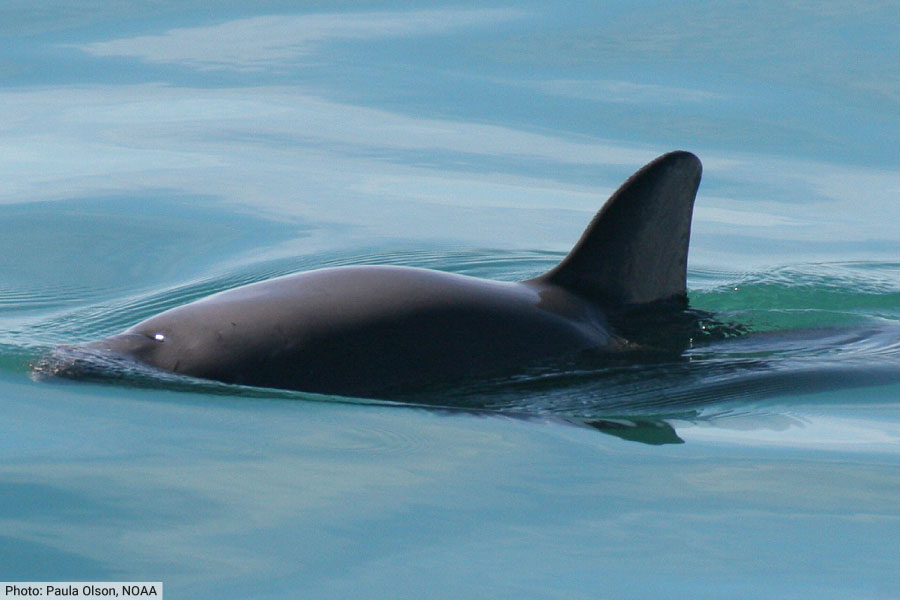
- Type of cetacean: Porpoise
- Parvorder: Odontoceti (toothed whale)
The vaquita is a small porpoise recognized by its dark eye rings and mouth line, contrasting with its light grey body. Known as the world's most endangered marine mammal, this species is endemic to the northern part of the Gulf of California and is critically threatened by illegal fishing practices.
Discover More With Active Wild
You can find out more about cetaceans and other animals on the following pages:
Visit our main animals page: Animals
You can see pictures and facts on EVERY species of dolphin on this page: Types of Dolphins
You can see pictures and facts on EVERY species of whale on this page: Types of Whales
Discover different types of mammals on this page: Types of Mammals
You can see more ocean animals on this page: Ocean Animals List with Pictures & Facts

